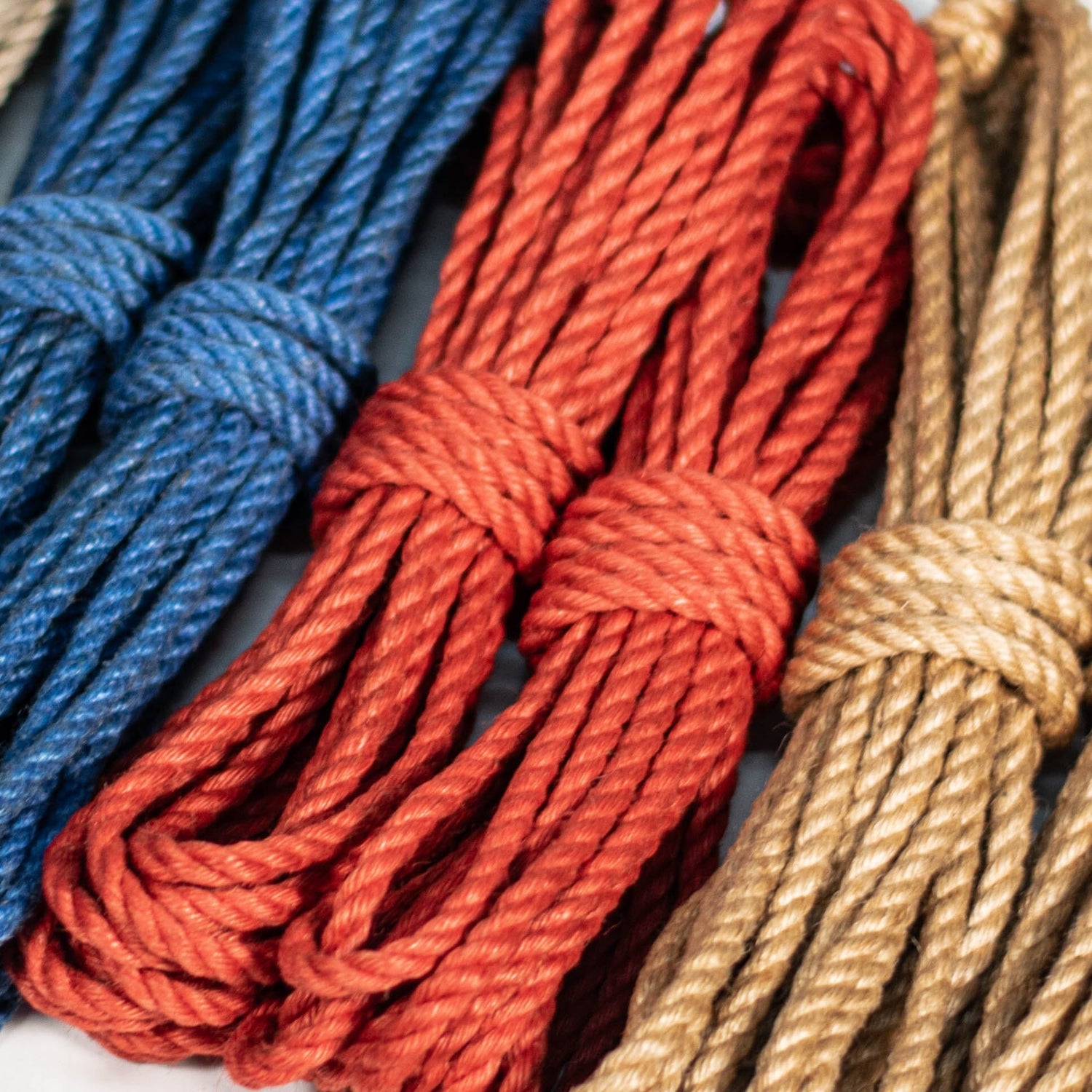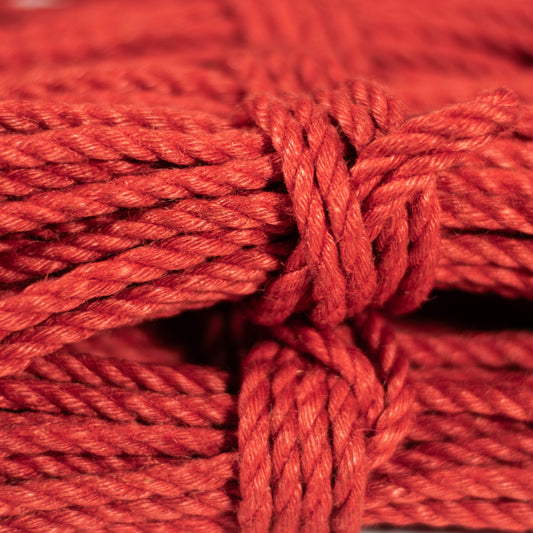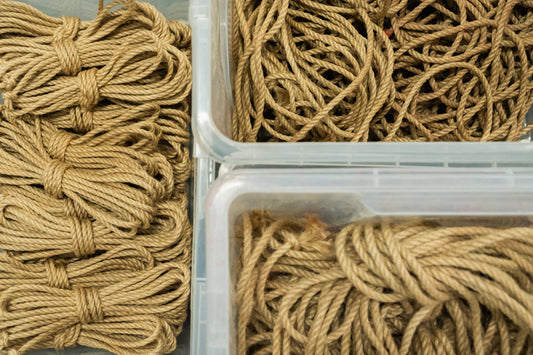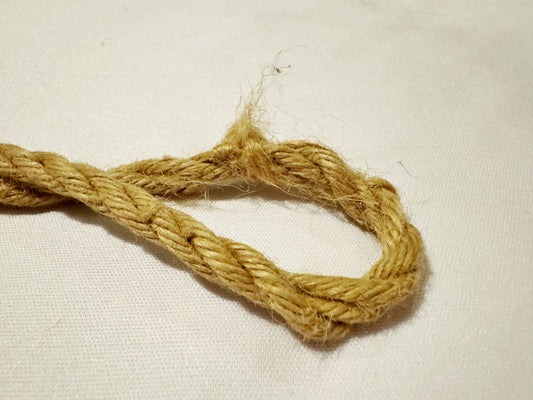Tying a stopper knot, or whipping the ends of the rope are two of the most popular ways to prevent your rope from unraveling. These methods have their pros and cons. Here are our top tips for choosing how to finish your ropes.

What problem are we solving?
Let’s go back to basics for a second. Your ropes are cut from a long reel of ropes, which creates new rope ends that need protecting. If we did nothing the three strands that comprise your rope would simply unravel. This is (k)not a problem that’s unique to shibari. The most common approaches to prevent your rope from unraveling are: taping the ends, tying a knot in each end, and whipping the ends. Each of these methods work in a similar way by compressing the strands together so they cannot fray
Ok so which is the best method?
They all have their own benefits for their own specific use-case. Taping ends is almost always a temporary measure to prevent the ropes unraveling. This is useful if for example you’re planning to do something more elaborate with them later, for instance if you’re tying thistle knots. It’s definitely not suitable longer term for ropes that are being used as the tape will eventually fall off.
Stopper knots are a quick and easy solution to preventing rope ends from unraveling. It’s a simple overhand knot - likely one of the first knots you learned to tie. This method leaves a small bulge at the end of the rope, which can be useful for joining rope (more on this later). Stopper knots are also relatively easy to untie, which is beneficial for rope maintenance. If you want a more secure option, you can tie a semi-permanent stopper knot by using the frayed ends of the rope. This will create a knot that is much less likely to come undone.
Whipping the ends of your rope is a more time-consuming method compared to others discussed here. Although it is commonly used in sailing, some people employ it to make their ropes more easily identifiable in crowded rope events. While whipping can provide a neat finish that helps prevent fraying and allows for customisation with different coloured threads, there are downsides to this method. It can make it more difficult to join ropes and some forms of maintenance may require removal of the whipping to access the strands.
There are lots of free online tutorials on how to whip jute ropes for shibari. A quick YouTube search will return dozens of results. For whipping rope you'll need twine (0.8mm or thereabouts), a pair of sewing scissors and good doze of patience plus attention to detail.
Our whipping kit can be found here.
You might find you need a bit of practice when you first start out, but once you get the hang of it, it can be quite fun. You can use different colours to identify ropes by length for example, or even use whipping at the bight to quickly spot it for tying.
And if you find it too time consuming, you can always pay someone to customise your ropes for you.

Stopper knots are multi-purpose.
Stopper knots are the most popular approach for finishing ropes because they serve multiple purposes. Not only do they prevent unraveling, but they also provide a simple method for joining ropes with a lark's head (cow hitch) that butts up against the knots. Additionally, the knots add weight to the end of the ropes, making them easier to handle. Another advantage of stopper knots is that they are easy to undo, allowing for re-adjustment of strand tension if needed. Overall, these benefits make stopper knots a versatile and practical choice for finishing ropes.
What if my stopper knot comes undone?
First and foremost re-tie it as soon as you can. If you find that your stopper knots come out regularly it can be a sign that they’re not being tied properly to begin with.
A useful tip for securing your knots is to tie them using the slightly frayed ends of the rope instead of the strands themselves. To do this, carefully untie the existing stopper knot without letting the rope unravel, then use your fingers to fray the rope ends a bit. Finally, tie a new stopper knot using the frayed ends. This will result in a smaller and tighter knot that is less likely to come undone.
However, it's important to note that this method may not be suitable for brand new ropes that require frequent adjustments, as stopper knots can be untied for rope maintenance.
In the case of shibari jute ropes, which are made of three strands that can shift slightly during the breaking-in process, being able to untie the knot is especially useful for pushing the strands back into balance before retying the knot.
Can I have both?
You can also of course combine both stopper knots and whipping, by using the whipping to simply mark your ropes (for example if you go to busy events and don't want to loose your ropes in the crowd). Or the whipping can be decorative, or help identify ropes by size or type if you set is a mix.
And voila! Now you know everything about how to finish your ropes. The only other thing to consider are the types of knots you can use on the ends of your ropes, such as Thistle Knots or Matthew Walker knots (and there are plenty more!).
And voila! Now you are ready to customise your ropes as you like.






